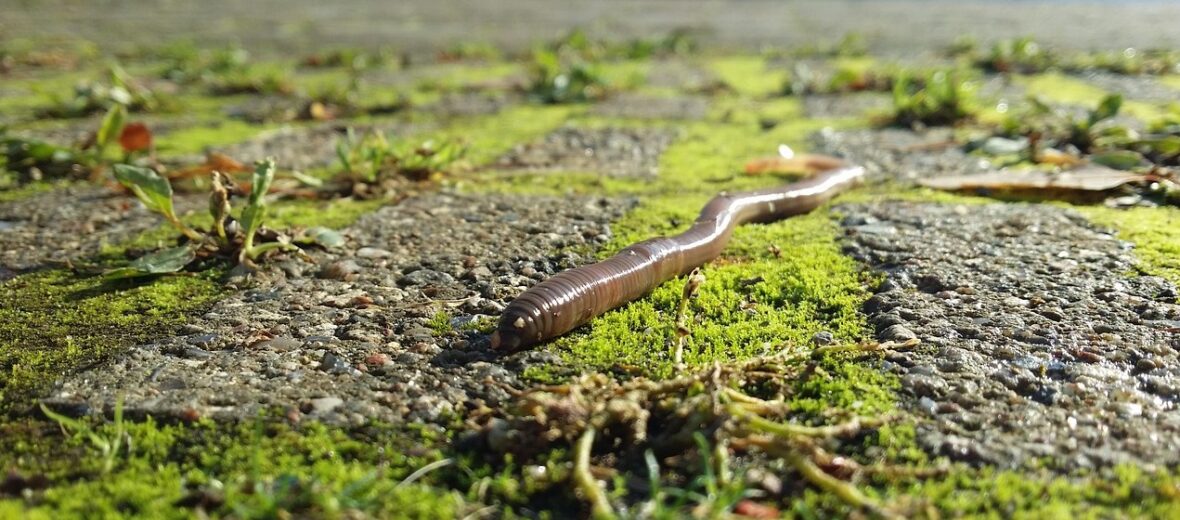
The earthworm is an invertebrate (lacks a backbone) and even though you might not think they’re animals, they are. There are 2,700 known species of earthworms, to date. They belong to a classification of critters called echinoderms. These simple yet complex creatures spend most of their time burrowing in the soil. When the soil gets too water-logged, or when the weather gets warm, you will see them emerge. If you see them on the sidewalk, help em out and put them back in the dirt or grass, that way they don’t dry out in the hot sun. Earthworms have been around for approximately 600 millions years!
First the Stats…
Scientific name: Lumbricus terrestris
Weight: Up to .5 ounce
Length: Up to 14 inches
Lifespan: Up to 8 years
Now on to the Facts!
1.) Earthworms can burrow up to 6 feet deep in the soil.
2.) What do they eat? These critters feast on decaying leaves in soil, animal manure, roots, bacteria, and fungi.
3.) They are considered both omnivores (eat both plant and animal matter) and detritivores (eat waste and debris).
4.) These worms can come in gray, pink, white, brown, and reddish-brown colors.
5.) You can find earthworms on every continent, sans Antarctica.
But wait, there’s more on the earthworm!
6.) Both males and females have reproductive organs, making them hermaphrodites.
7.) During the act of mating, both males and females will fertilize each other’s eggs.
Did you know…?
Herds of earthworms travel collectively in each direction together.
8.) Their cocoon can house up to 20 eggs.
9.) Birds, amphibians, reptiles, and nematodes all prey on earthworms.
10.) Their body is divided into multiple segmented rings. Each ring can relax and contract independently of one another.
But wait, there’s still more on the earthworm!
11.) Each ring also is equipped with setae (a stiff structure like a hair or a bristle) that helps them move about.
12.) Earthworms are able to double their population in just 2 – 3 months.
Did you know…?
Thanks to specialized cells in their head, they are able to sense light and dark.
13.) The skin of these critters produces a lubricating fluidic substance that helps them take in oxygen.
14.) Earthworms communicate via touch.
15.) These worms tend to be nocturnal (active at night).
But wait, there’s still a little more on the earthworm!
16.) Earthworms are typically beneficial to agriculture and home gardens, as they aerate the soil and help make way for plant roots.
17.) The downside to their soil burrowing is that it can result in soil erosion and the leaching of nutrients from the soil structure, which can hurt forest growth.
Did you know…?
Contrary to popular belief, if you cut these worms in half, they will not regrow into 2 worms. They will likely just die. So don’t do this!
18.) They are often used in vermiculture (the cultivation of worms for use as bait or composting). Some folks use them in their compost bins to aid in breaking down matter into soil.
19.) These echinoderms can consume up to their body weight in food a day.
20.) There are certain species of earthworms that can regrow portions of their bodies.
Now a Short Earthworm Video!
Be sure to share & comment below! Also, check out the Critter Science YouTube channel. Videos added frequently!
Want to suggest a critter for me to write about? Let me know here.



